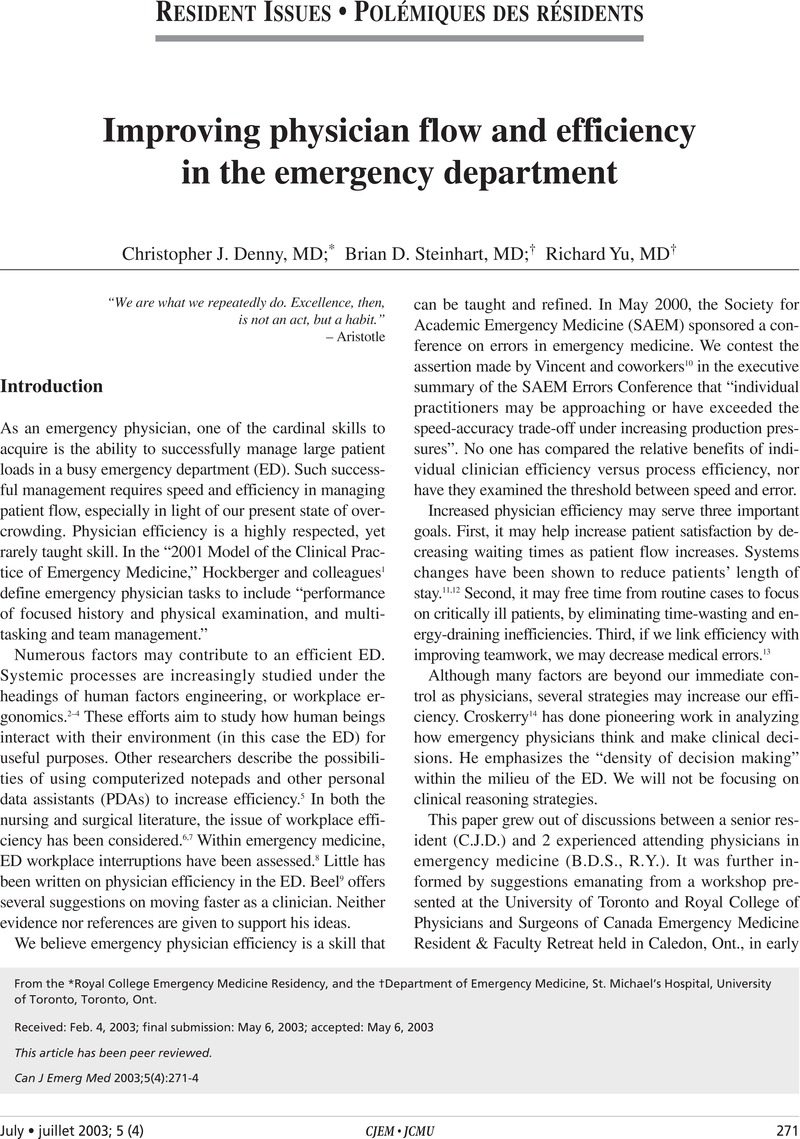Crossref Citations
This article has been cited by the following publications. This list is generated based on data provided by Crossref.
Gilligan, Peadar
Winder, Stephen
Ramphul, Navin
and
OʼKelly, Patrick
2010.
The Referral And Complete Evaluation Time Study.
European Journal of Emergency Medicine,
Vol. 17,
Issue. 6,
p.
349.
Perry, Warren M.
Lee, Christoph I.
Steers, W. Neil
Post, Lori A.
and
Forman, Howard P.
2013.
Time-motion analysis of emergency radiologists and emergency physicians at an urban academic medical center.
Emergency Radiology,
Vol. 20,
Issue. 5,
p.
409.
Claessens, Yann-Erick
Wannepain, Sophie
Gestin, Stéphanie
Magdelein, Xavier
Ferretti, Elsa
Guilly, Marine
Charlin, Bernard
and
Pelaccia, Thierry
2014.
How emergency physicians use biomarkers: insights from a qualitative assessment of script concordance tests.
Emergency Medicine Journal,
Vol. 31,
Issue. 3,
p.
238.
Carmelli, Guy
Watson, Erin E.
Villarroel, Nadia A.
Dixon, William W.
and
Clarke, Samuel O.
2021.
A nationwide survey of emergency medicine resident workflow efficiency: Are training programs teaching residents to be efficient?.
AEM Education and Training,
Vol. 5,
Issue. 2,



